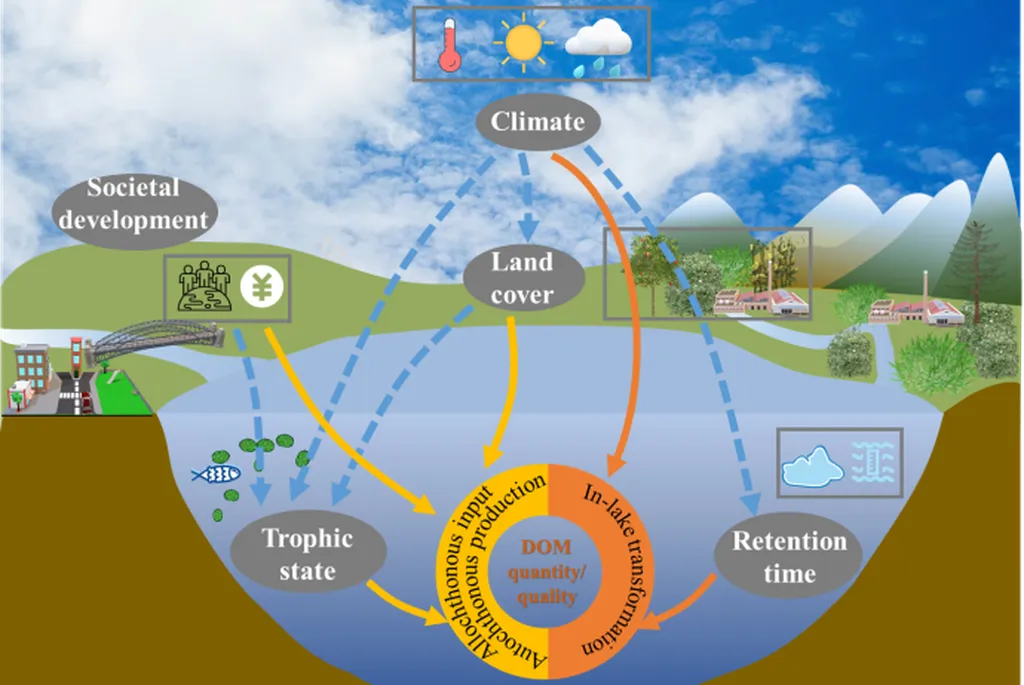In a groundbreaking study published in *Fundamental Research* (translated from Chinese as “基础研究”), researchers have unveiled a comprehensive analysis of dissolved organic matter (DOM) across Earth’s diverse systems, offering critical insights into global carbon cycles and potential impacts on the energy sector. Led by Ang Hu of the Key Laboratory of Lake and Watershed Science for Water Security at the Nanjing Institute of Geography and Limnology, Chinese Academy of Sciences, the research synthesizes data from 2,995 samples collected from 317 studies, spanning waters, land, plants, petroleum, and atmospheric systems.
DOM, a complex mixture of thousands of distinct molecules, plays a pivotal role in carbon cycling. Understanding its molecular characteristics is essential for predicting its fate and behavior in various environments. The study focuses on two key abundance-weighted average indices: the hydrogen-to-carbon (H/C) and oxygen-to-carbon (O/C) ratios. These ratios provide a molecular-level perspective on DOM’s chemical composition and its response to environmental factors.
The findings reveal that H/C ratios are notably lower in water and land systems compared to other environments, with waters averaging H/C = 1.15 ± 0.005 and land at H/C = 1.20 ± 0.010. “This suggests that DOM in these systems is generally more oxidized and less hydrogen-saturated,” explains Hu. The study also highlights a U-shaped pattern in H/C ratios along latitudinal gradients, with the lowest abundance of hydrogen-saturated molecules occurring at mid-latitudes (approximately 40°-50°) in river water, lake water, and forest soil.
Environmental factors such as pH, dissolved oxygen, and carbon and nitrogen contents were identified as primary controllers of these ratios. Additionally, the study uncovered significant links between the ratios and extreme climatic factors, including precipitation during the warmest quarter and maximum temperature of the warmest month. “These findings provide a molecular-level understanding of DOM distribution and its underlying drivers, which is crucial for predicting global carbon cycle processes under future climate change scenarios,” Hu adds.
For the energy sector, these insights could have profound implications. DOM’s role in carbon cycling directly impacts the efficiency and environmental footprint of energy production processes, particularly in systems involving water and land. Understanding how DOM behaves under different environmental conditions can help optimize energy extraction methods, reduce carbon emissions, and improve sustainability practices.
The study’s holistic approach offers a foundation for future research and practical applications. By characterizing the global distribution of DOM and identifying its environmental drivers, scientists and industry professionals can better anticipate and mitigate the impacts of DOM on energy systems. As climate change continues to alter Earth’s ecosystems, this research provides a vital tool for adapting and innovating in the energy sector.
In summary, this research not only advances our scientific understanding of DOM but also paves the way for more sustainable and efficient energy practices. As we navigate a rapidly changing world, such insights are invaluable for shaping a more resilient and environmentally conscious future.

